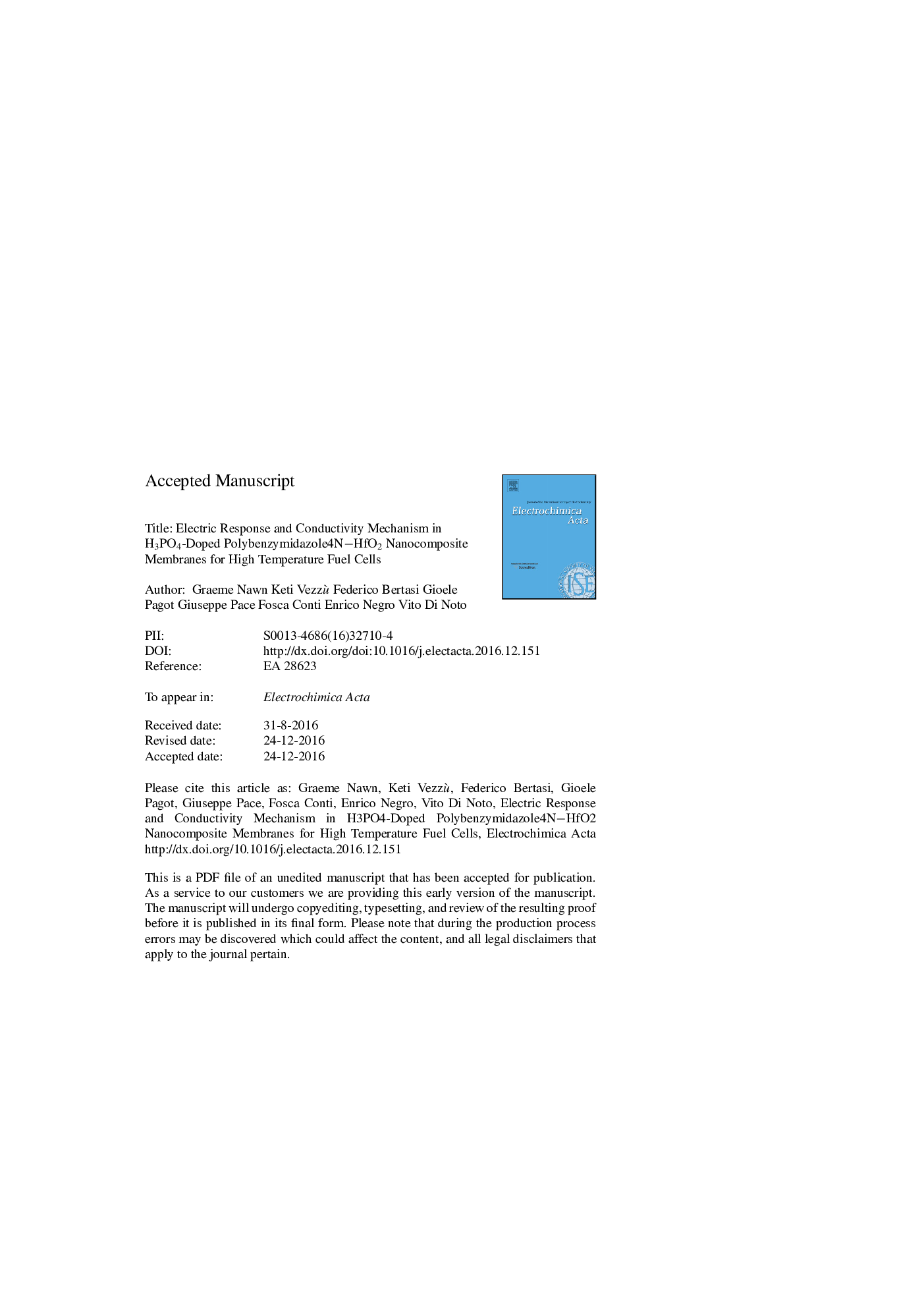| Article ID | Journal | Published Year | Pages | File Type |
|---|---|---|---|---|
| 4767475 | Electrochimica Acta | 2017 | 52 Pages |
Abstract
Relaxation and polarization phenomena of phosphoric acid-doped [PBI4N(HfO2)x](H3PO4)y nanocomposite membranes for high-temperature proton-exchange membrane fuel cells are studied using Dynamic Mechanical Analysis (DMA) and Broadband Electrical Spectroscopy (BES). The membranes are obtained by casting combinations of a polybenzimidazole polymer (PBI4N) with increasing amounts of hafnium oxide nanofiller, resulting in [PBI4N(HfO2)x] hybrid systems with 0 â¤Â x â¤Â 0.32. Phosphoric acid at varying content levels (0 ÷ 18 wt%) is used as a doping agent, giving rise to [PBI4N(HfO2)x](H3PO4)y membranes. DMA and BES studies lead us to determine that the electric response of the membranes is modulated by polarization phenomena and by α and β dielectric relaxation events of the polymer matrix. Additionally, the experimental results suggest that in [PBI4N(HfO2)x](H3PO4)y membranes the conductivity occurs owing to three conductivity pathways: two mechanisms involving inter-domain proton migration phenomena by “hopping” events; and one mechanism in which proton exchange occurs between delocalization bodies. These results highlight the significant effect of the hafnium oxide nanofiller content on the conductivity of [PBI4N(HfO2)x](H3PO4)y where, at x â¥Â 0.04, demonstrates conductivity higher (9.0 Ã 10â2 S/cm) than that of pristine H3PO4-doped PBI4N (4.8 Ã 10â2 S/cm) at T â¥Â 155 °C.
Keywords
Related Topics
Physical Sciences and Engineering
Chemical Engineering
Chemical Engineering (General)
Authors
Graeme Nawn, Keti Vezzù, Federico Bertasi, Gioele Pagot, Giuseppe Pace, Fosca Conti, Enrico Negro, Vito Di Noto,
